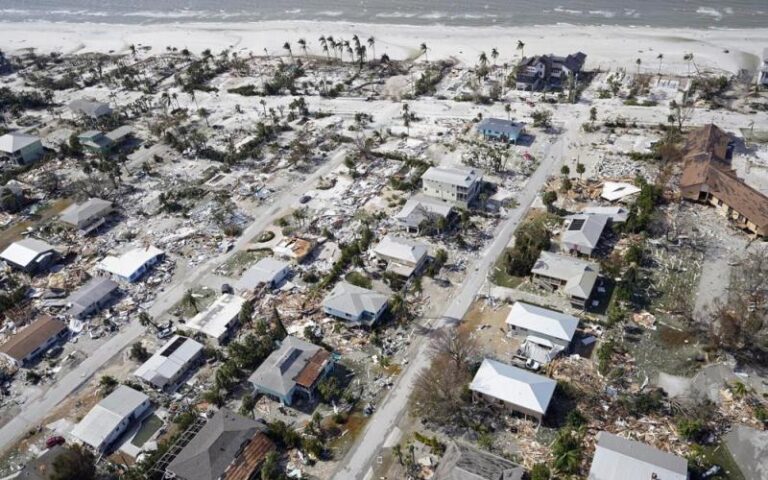BIG Special Discounts Available NOW! Check out our Products
Leader in Waste Management Solutions | PROUDLY MADE IN THE USA ![]()
Leader in Waste Management Solutions | PROUDLY MADE IN THE USA ![]()

The need for high-quality disaster relief is vital, no matter where you live. Over the past few decades, natural disasters have killed between 40,000 and 50,000 people per year worldwide. Whether communities are leveled by tornadoes, displaced after hurricanes, or left without power after an earthquake, people who experience disaster can’t simply be left to figure it out themselves.
As a company dedicated to providing sanitary, portable toilet solutions for businesses, the military, and first responders, we understand the importance of having the best equipment, materials, and supplies available.
But what do support organizations really need to help survivors through this hardship? Let’s discuss the 6 Rs of disaster relief resources that support organizations need to have ready to bring to disaster sites.
First up? First aid. Especially in disasters that result in mass casualties and injuries. Relief organizations must assess the damage and determine the amount/type of first aid kits, medical equipment, and medications needed to treat the most pertinent injuries.
This can be extra challenging with significant infrastructure damage (think – destroyed or blocked roads, no running water, and no electricity).
Next, aid organizations need to be prepared with enough food and water. People can only go so long without water (no more than three days), so getting enough potable water for drinking and washing becomes a top priority. This can also be challenging to transport when thousands are impacted. The CDC recommends that each person have a gallon of daily water for drinking and sanitation.
Survivors also need access to non-perishable food items that can last without access to electricity. Easy to open, nourishing, and nutritious food must be available. And don’t forget – disasters don’t discriminate by age. Infants and babies need access to formula and soft foods as well.
Victims of disasters need access to portable, short-term shelter. Tents, tarps, blankets, and sleeping bags need to be set up in a space where families can be reunified.
This isn’t as simple as it sounds. Especially in areas where infrastructure has been significantly damaged, it can be challenging to find locations for temporary shelters that are safe, accessible, and have access to essential resources like water and sanitation.
Aid organizations must have a plan to provide portable bathrooms for disaster relief to keep conditions sanitary. That is – unless they want a health disaster to pair with a natural disaster. Some jaw-dropping innovations, such as WAG bags (waste alleviation and gelling bags), portable commodes, and bucket commodes, can make this easier. While not all portable bathrooms are created equal, Brief Relief offers the only NASA-developed gelling agent that deodorizes and solidifies waste within 10 seconds, leaving survivors with an easy, odor-free, sanitary way to go when bathrooms are unavailable.
The fantastic thing about these next-level portable bathroom solutions is that they can be more easily transported than bulky porta-potties or bathroom trailers. They also use eco-friendly disposable waste bags that can be purchased in large quantities and thrown away in the regular garbage. Relief organizations can even provide portable toilet privacy tents or entire portable lavatory systems that can be set up in minutes, serving private restrooms in a pinch.
Landlines and cellular networks can’t be relied on during a disaster. Relief organizations must coordinate efforts, stay updated on emergency alerts, and efficiently make decisions to adapt as the disaster progresses. Communication can make or break success. Radios and satellite phones are indispensable communication alternatives. These devices are designed to operate independently of local infrastructure, allowing communications to continue.
After a disaster, affected areas are often littered with debris, such as fallen trees, collapsed buildings, and damaged infrastructure. Trucks, bulldozers, and heavy machinery are needed to clear obstructions quickly and safely and repair damaged infrastructure. Large vehicles are also required to transport materials (tents, tarps, and supplies) to disaster-stricken areas and move personnel and supplies. This means being prepared with the correct equipment and the right amount of equipment for the specific disaster.
Responders will also need other recovery tools, such as gloves, ropes, ladders, masks, goggles, and other protective equipment. For some disasters, aid workers use thermal imaging cameras to locate and extract survivors.
When it comes to disaster relief, government relief agencies and other non-government organizations need to be able to count on the quality of their specialized resources and technologies. By equipping organizations like FEMA and NGOs with state-of-the-art medical supplies, innovative sanitation solutions, sustainable shelter options, and efficient logistical support, we empower them to respond effectively and expedite recovery efforts.
Join Brief Relief in supporting disaster relief efforts with innovative, sanitary portable restroom solutions. Together, we can ensure communities receive the essential resources they need to recover and thrive.